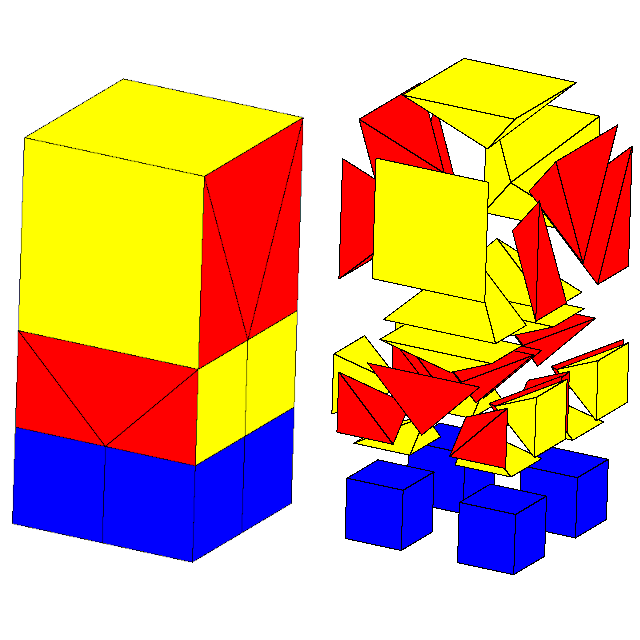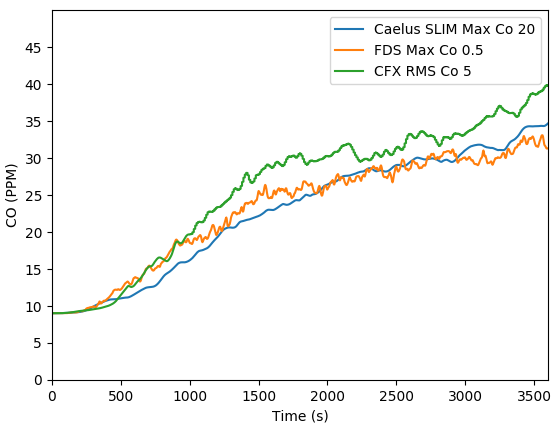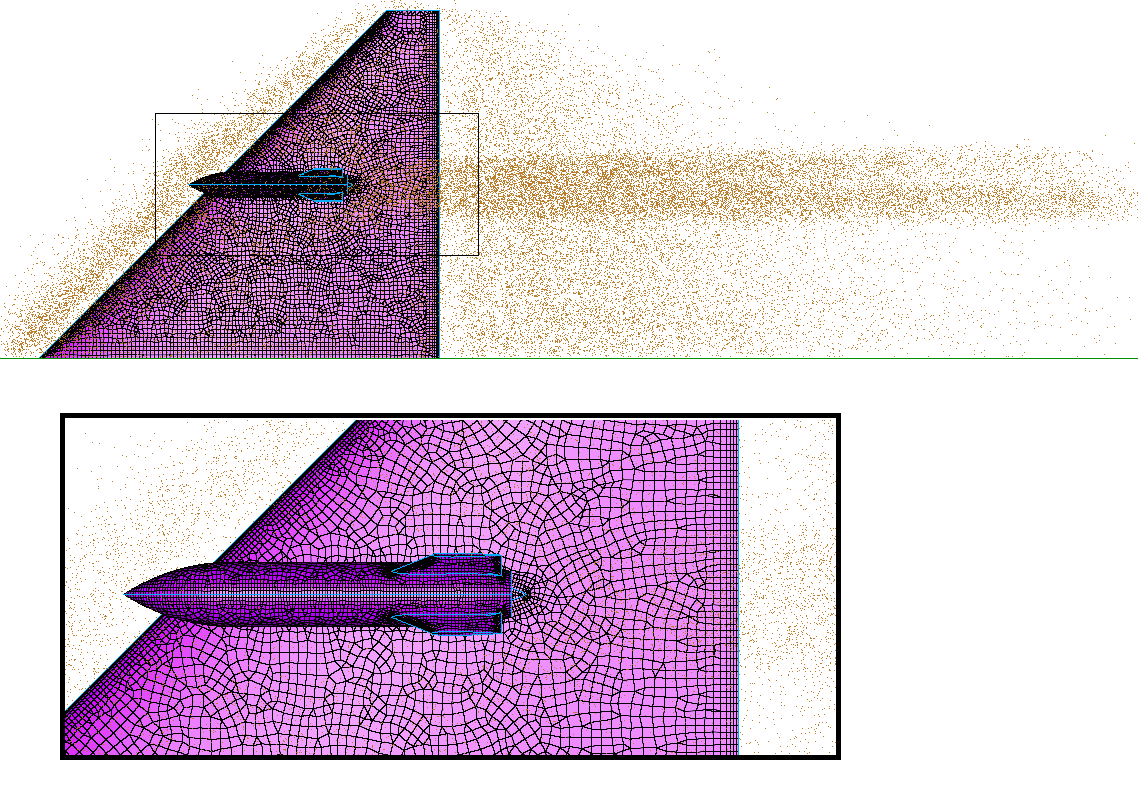Introduction This monthly mesh we discuss part 2 in a blog series on "Car park…
Voxel Transition Cell Recombination for OpenFOAM meshes
This monthly mesh we refer readers to our guest blog “Recombination of Voxel Transition Cells for OpenFOAM meshes”, published on Another Fine Mesh. That article describes a utility (vtCombine) developed by Applied CCM for Caelus that recombines the transition layers in voxel meshes into polyhedra cells. Resulting in smaller cell count, improved mesh quality and improved solver convergence. Pointwise V18.3 introduced a hex-core capability that uses regular hexahedra instead of tetrahedra in farfield regions. Combinations of tetrahedra and pyramid cells provide the transition between different sized hexahedra cells. For some solvers like OpenFOAM, usage of pyramids in the transition layers can be problematic. OpenFOAM can handle polyhedral cells; therefore, it would be ideal not to retain the pyramid/tetrahedron cells in the transition, rather replace them with polyhedra.
Figure 1 shows an example transition region between four small hexahedra (blue cells) at the bottom to one large hexahedron at the top (not shown)

Benefit of vtCombine
Steady-state laminar flow past a sphere was used to investigate the effect of farfield mesh type on simulation time and accuracy. The same T-Rex inflation around the sphere on three separate meshes using different farfield cell types was tested:
- Voxel,
- Recombined voxel, and
- Tetrahedra.
Table 1 shows the recombined mesh had a reduction in execution time greater than its reduction in cell count (see Table 1). Likewise, its convergence of the pressure equation was also better.
| Recombined voxel compared to | Cell count reduction (%) | Execution time reduction (%) |
|---|---|---|
| Voxel | 16 | 21 |
| Tetrahedra | 27 | 39 |
(Table 1)
Want to test voxel meshes yourself?
If you want to try the voxel meshing feature in Pointwise for yourself, now is the time to request a free trial license.
If you missed our other blogs, see here.
12.
Voxel Transition Cell Recombination for OpenFOAM meshes



